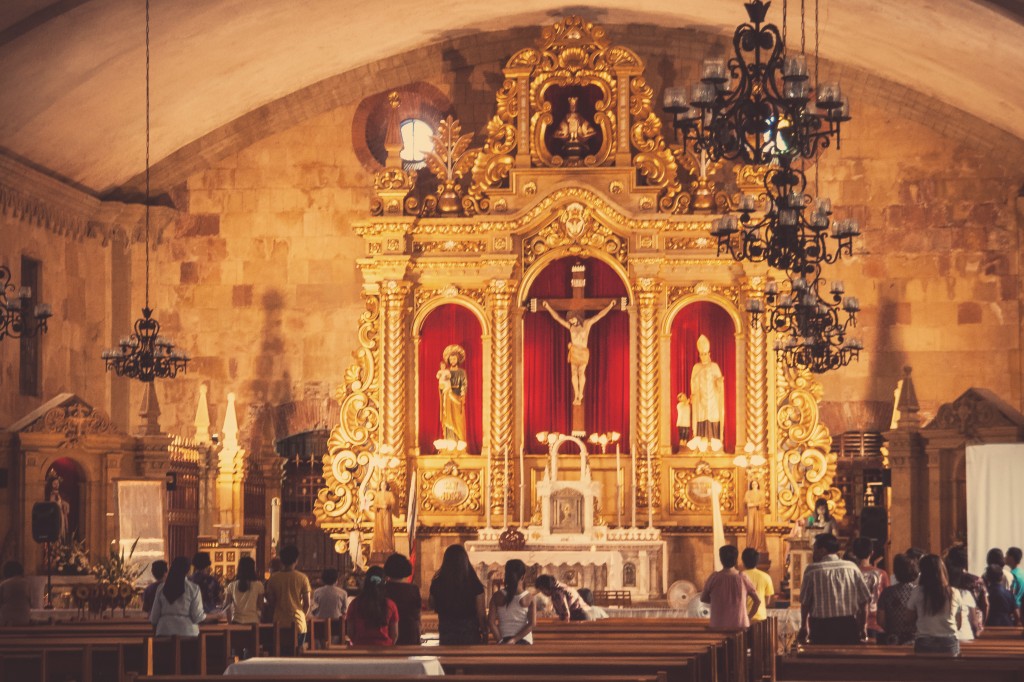A recent Social Weather Systems survey has the Catholic Church up in arms. The survey, based on 1200 face-to-face interviews nationwide showed that 9.2% of Catholics have considered, at least sometimes, leaving the Roman Catholic Church. The study also showed that from 64% church attendance in 1991, only 37% of Catholics go every week to Mass now. The Church response has been quite the display of classic informal logical fallacies.
The initial public reaction from the Church to the survey was outright denial. Peachy Yamsuan, Communications Chief of the Archdiocese of Manila pointed to the quite repugnant, yet popular, practice of holding a supposedly solemn Mass in the middle of a shopping mall (mall giant SM was singled out by Yamsuan). Yamsuan, rather ironically, questioned the survey, saying that the Church couldn’t accept statistics without “real evidence.”
Apart from Yamsuan, several bishops, such as Jaro Archbishop Angel Lagdameo used his cathedral’s Mass attendance to attempt to refute the study. This was essentially the same response from Msgr. Clemente Ignacio, rector of the Quiapo Church, as well as from the bishops of Marbel and Cubao, as reported in the Inquirer piece.

The common strand you can gather from their responses is, “my local parish seems to be doing fine, so the study must be wrong.” This is a classic fallacy of composition, where what is true for a part is assumed to be true for the whole. Now, I’m not a big fan of cheaply calling out fallacies, but the defense of the Church against the survey seems to hinge so specifically on this fallacy, that it simply begs to be called out.
In a follow up piece, the Inquirer records Basilan Bishop Martin Jumoad repeating the same fallacious argument, “So, I don’t see here in Basilan the results of their survey.” The bishop from Sorsogon says the same thing, “I do not believe in that [survey] because the number of people going to Mass is going up. Last Holy Week, we had so many people in church. So as far as Sorsogon is concerned, I don’t believe in that survey.”
The thing is, it was not a survey of Sorsogon, Basilan, or Cubao. It was a nationwide survey, meant to reflect a national trend. And a national trend 27 percentage points deep is certainly not going to be refuted by off-the-cuff statements made from bishops’ anecdotes—especially since bishops tend to hold court in the largest, most opulent churches. As an aside, numbers during Holy Week are most definitely not going to be representative of typical Church attendance. Even atheists get dragged along to go to special Church holy days of obligation by relatives.
So, were these bishops lying about their observations when the trends greatly disagree with them? I wouldn’t be so quick to assume malice. One explanation that would easily agree with all pieces of evidence that we have, considering the CBCP anecdotes as well as the SWS survey, is that church attendance is dwindling, but it is also consolidating. That means that people are leaving smaller parishes and those that are left are flocking to the big churches (and malls), where bishops are more likely to see them. It is also likely that, while a larger proportion of nominal Catholics no longer regularly attend Mass, the great increase of our population from 1991 to 2013 due to a lack of a reproductive health program accounts for the bishops’ anecdotes. These do not excuse the bishops’ failure to understand basic statistics, but they just might explain it.
If the first stage of grief is denial, the next is anger, and this is now where the Church stands. Former CBCP President Oscar Cruz is now questioning the motives behind the statistical study. He is now branding the Aquino Administration, which championed reproductive health, as the “culprit” behind the study. “The Catholic Church in the country must be a big pain in the neck to the present administration… It has therefore become imperative to undermine the Catholic Church—such as the supposed survey result of Catholics becoming non-Catholics,” says Cruz.
It will be interesting how the Church will handle the bargaining and depression stages of grief. The last stage will be acceptance—acceptance of the possibility that maybe, just maybe, the Catholic Church is fading into irrelevance.


The Church has never been one to rely on facts. Take for example …..the Bible.
I agree with the overall ideas author but the the way the article was written was too partial. Sana more facts and figures. Anyway, made a quick Google and saw that the population of Pinas in 1991 is 62 million compared to 95+ million in 2013. Assuming that the percentage of population professing to be Catholic is the same (~80%), the the population attending mass would be 31.7 million in 1991 versus 28+ million in 2013 or a decrease of just 13% (the Catholic Church's anti population management agenda do make sense for them). It was also unclear what % of the people who no longer attend mass 1) became atheists, 2) transferred to other religions or other Christian denominations, or 3) still profess to be Catholic but not practice as before.
Funny that is was actually Fr. Joel Tabora, SJ who suggested the survey. Here's the direct quote:
"Seriously though, there ought to be great concern. People have been leaving the Catholic Church. People are about to leave the Church. It is time, I think, for Mahar Mangahas to take out his social survey tools to help us understand what is happening."
http://taborasj.wordpress.com/2013/02/07/the-cath…